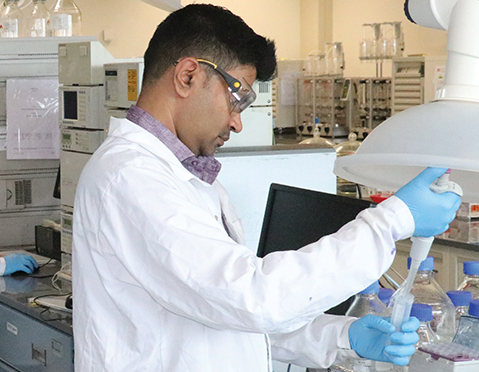PRODUCT STEWARDSHIP
A strong product stewardship program is critical to the success of our EHSS management and sustainability programs.
PRODUCT STEWARDSHIP AT SABIC TECHNOLOGY CENTER IN INDIA
- Food contact compliance testing on the existing polymeric products to align with the US Food and Drug Administration, the European Food Safety Authority, and other global testing protocols.
- Food contact exposure evaluation of chemical substances from developmental grades of polymers.
- REACH EU chemical registration analytical support to sell SABIC products in Europe.
- Physico-chemical studies according to the Organization for Economic Co-Operation and Development (OECD) test guidelines.
- Polymer registration according to the Japanese Ministry of Economy, Trade, and Industry guidelines.
- Root cause investigation on product deviations affecting product safety.
- Globally Harmonized System of Classification and Labeling assessments of chemical substances.
PRODUCT STEWARDSHIP KNOWLEDGE AND COMPETENCY

SABIC Technology Center in Bengaluru, India, supports global product stewardship testing requirements.
PRODUCT RISK DISCOVERY AND MANAGEMENT
EHSS IN VALUE CHAIN COMMUNICATION
We take product safety responsibilities seriously, and have cultivated an open channel of communication across the value chain to ensure that our products are used safely and appropriately.
We diligently build a strong bridge of communications with customers to understand potential hazards and risk management practices. In 2017, we piloted a new communications protocol with key styrene and methanol customers in the United States as a part of our Responsible Care® value chain initiative. This year, we expanded this protocol for customer outreach on the priority chemicals butanol, MEA (monoethanolamine ), and TEA (triethanolamine) in Europe, and methanol in India.
In addition to proactively communicating with customers on high-priority chemicals, we pride ourselves on responsiveness to customer product stewardship requests and inquiries. This year, we responded to 13,932 inquiries – a 10 percent increase on 2017.
As we endeavor to make communications seamless, we also work to enhance the SABIC website through a strategic initiative between our Product Stewardship, IT, and Global Communications teams.
